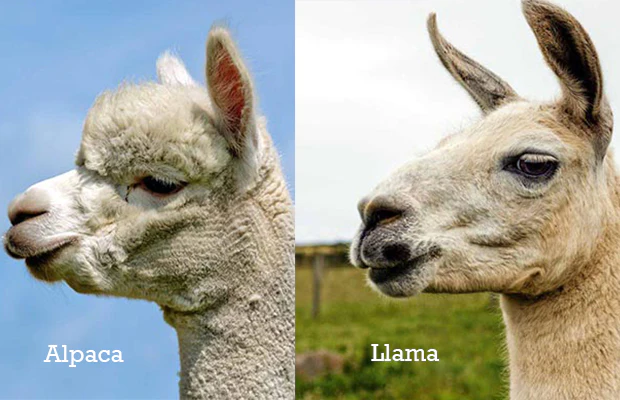
This piece, the second part of “Animals that look alike,” features a new set of exciting animals. It also clarifies a few misconceptions about some of these animals while at it – from how related they are to their demeanour. Read on to find out!
- Porpoises and Dolphins

Porpoise – Up.
Dolphin – Down.
Because they are both highly intelligent and charismatic marine mammals, many tend to lump them together. They use the terms “porpoises” and “dolphins” to describe either of them interchangeably. However, they are not so closely related.
Although they belong to the same order, Infraorder Cetacea, porpoises are more related to narwhals and belugas than they are to dolphins. Here are some differences between the two:
Faces and Mouths: Porpoises have small, flattened, spade-shaped teeth without prominent beaks. Dolphins have prominent beaks and larger, cone-shaped teeth. However, some dolphins – like Hector’s dolphin – lack a pronounced beak.
Body Build and Fins: Dolphins have longer and leaner body builds than porpoises. Dolphins also have prominent and more curved dorsal fins than porpoises.
Behavior: Dolphins are more social, extroverted, and social than porpoises. They often travel in large groups. Porpoises are not so gregarious. They travel in small groups – or alone.
2. Possums and Opossums.

Opossum – Left.
Possum- Right.
Opossums and possums are species of marsupials that are often mistaken for each other. Many even erroneously use their names interchangeably. However, they belong to different orders. Opossums belong to Didelphimorphia while possums belong to Diprotodontia. Here are some other salient differences between the two. They include:
Habitat: Opossums are marsupials mainly native to the North American Continent. Possums on the other hand are present in Australia, New Guinea, China, and New Zealand. There are many species of possums, but just one specie of opossum.
Body Features: Possums have bushy tails while opossums have naked, bare tails. Possums are usually smaller than opossums too. Possums sport brown or golden fur, but shades of white, grey, or black are not uncommon. Opossums, on the other hand, have white faces with black eyes, and usually sport grayish fur to go.
Behavior: There is a marked difference between possums and opossums in terms of their reactions to predators. Opossums tend to play dead in response to threats, hence the term “playing possum” is actually for opossums. Possums, on the other hand, are less cautious of threats.
3. Llamas and Alpacas

Alpacas – Left
Llama – Right.
Llamas and alpacas are related. They are both camelids – members of the family Camelidae. A cursory glance will leave you thinking they’re the same, but here are some of the differences you’ll see when you peer closely.
Size and Weight: The most noticeable difference between alpacas and llamas is the disparity in size and weight. Llamas are larger, standing at almost 50 inches at the shoulder and weighing more than 100kg on average. Alpacas, on the other hand, stand at 35 inches at the shoulder and weighing at 60kg.
Fur/Hair: Alpacas have long, thick hair that is used for fleece production. They come in a variety of colors too, ranging from shades of white to yellow and black. Llamas, on the other hand, have coarser, inferior-quality hair. Thus, they do not usually suffice for fleece production. Rather, people use them to carry loads.
Head/Face: Llamas have longer ears than alpacas. Llamas also have longer faces than alpacas
Behavior: Llamas are less gregarious than alpacas. They are also not as timid as their little cousins.
4. Rabbits and Hares

Hare: Left.Rabbit: Right
Size: This is the most obvious differing characteristic between the two. Hares are generally larger, have longer ears, and have longer legs than rabbits. Hares are also fast runners due to their powerful, longer hindlegs.
Social Behavior: Hares tend to be solitary or live in pairs. Rabbits are more social, and they live in underground nests consisting of many individuals. Hares, however, live above the ground.
Young: Rabbit young are born blind, bare, and helpless animals. Hare young, on the other hand, are born furred, sighted, and ready to go. This is important as they live in open spaces and have to keep up with the harsh demands of their habitats.
Enjoyed this? For more wildlife pieces, click here.



Leave a Reply